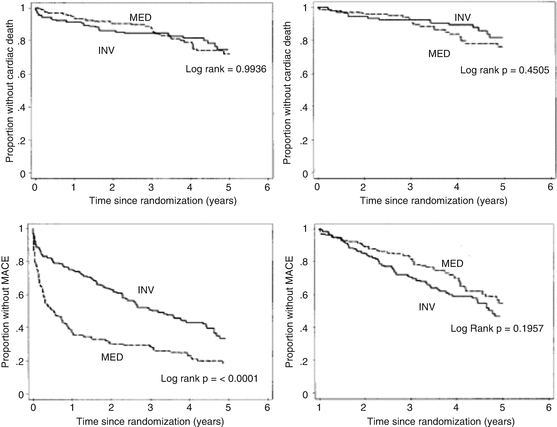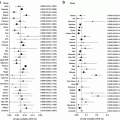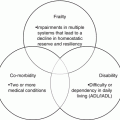Group A
Group B
65–69 years (n = 400)
70–74 years (n = 300)
≥75 years (n = 282)
p value
65–69 years (n = 257)
70–74 years (n = 241)
≥75 years (n = 270)
p value
No. of segments
578
422
421
366
339
392
No. of vessels dilated (%)
1
81.8
84.3
75.2
81.3
85.5
82.6
2
17.3
14.3
23.4
0.07
17.9
14.5
16.7
0.56
3
1.0
1.3
1.4
0.8
0.0
0.7
Success rate/segment (%)
84.6
86.5
88.8
0.16
93.7
91.5
90.8
0.31
Success rate/patient (%)
87.3
88.0
89.4
0.7
95.7
93.0
91.9
0.18
No. of grafts attempted
29
22
18
0.98
32
26
29
0.91
Due to the increased use of stents, the advances in antithrombotic medications, as well as the enhanced use of peri-interventional ACT-measurement, the in-hospital mortality rate as well as long-term outcome decreased to 1.1 % and even showed a continuous improvement in the course of time [15].
In a registry recording the data of 7472 patients, an age of 85 years (without further comorbidities) was associated with a two- to threefold increase in procedure related mortality [16]. Batchelor et al. concluded, that for elective procedures, procedural risks vary widely and are strongly influenced by comorbidities such as left ventricular impairment, renal failure and diabetes mellitus. Interestingly, the authors found an increase in success rates and a 37 % reduction in cardiovascular events over a time period of 4 years, potentially outlining the rapid progress in interventional procedures.
Feldman et al., using the 2000/2001 New York State Angioplasty Registry, compared in-hospital mortality and major adverse cardiac events (MACEs; death, stroke, or coronary artery bypass grafting in emergency and elective PCI cohorts) across different age groups (<60 years, 60–80 years and >80 years), with a large sample of 671 patients >80 years undergoing emergency procedures and 5782 patients undergoing elective PCI. Elderly patients had more comorbidities, including more extensive coronary atherosclerosis, hypertension, peripheral vascular disease, and renal insufficiency, and presented more frequently with hemodynamic instability or shock. In the emergency PCI group, in-hospital mortality (1.0 % vs 4.1 % vs 11.5 %, p < 0.05) and MACEs (1.6 % vs 5.2 % vs 13.1 %, p < 0.05) increased by age. In the elective PCI group, rates of in-hospital complications were considerably lower, with an incremental increase in mortality (0.1 % vs 0.4 % vs 1.1 %, p < 0.05) and MACEs (0.4 % vs 0.7 % vs 1.6 %, p < 0.05) in the elderly. The factor age was a strong predictive of in-hospital mortality rate for emergency and elective PCI by multivariate analysis. The authors concluded, that elective PCI in the elderly has a favorable outcome and acceptable short-term mortality rate in the stent era. Elderly patients, in particular octogenarians undergoing emergency PCI, have a substantially higher risk of in-hospital death.
The TIME trial still appears to be the milestone trial regarding the treatment of elderly patients with stable CAD [17]. In this randomized, prospective, multicenter trial, Pfisterer et al. enrolled patients aged 75 years or older with chronic angina (of at least Canadian Cardiac Society class II) despite at least two antianginal drugs. Patients were randomly assigned coronary angiography and revascularization or optimized medical therapy. The primary endpoint was quality of life after 6 months, as assessed by questionnaire and the presence of major adverse cardiac events (death, non-fatal myocardial infarction, or hospital admission for acute coronary syndrome with or without the need for revascularization). Analysis was by intention to treat. 150 patients were assigned medical therapy and 155 invasive therapy. After 6 months, angina severity decreased and measures of quality of life increased in both treatment groups; however, these improvements were significantly greater after revascularization Fig. 5.1.


Fig. 5.1
Comparison of early and late major adverse cardiac events between medically and interventionally treated patients (Adapted from Ref. [17] with permission)
Major adverse cardiac events occurred in 72 (49 %) of patients in the medical group and 29 (19 %) in the invasive group (p < 0.0001). The authors concluded, that patients with angina aged 75 years or older, despite standard drug therapy, benefit more from revascularization than from optimized medical therapy in terms of symptom relief and quality of life. Subsequently, these patients should first be offered invasive assessment, regardless of their high risk profile, followed by revascularization – if feasible.
After 1 year, improvements in angina and quality of life persisted for both therapies compared with baseline, but the early difference favoring invasive therapy disappeared [17]. Among invasive therapy patients, later hospitalization with revascularization was considerably less likely (10 % vs 46 %; hazard ratio [HR], 0.19; 95 % confidence interval [CI], 0.11–0.32; P < .001). However, 1-year mortality rates (11.1 % for invasive; 8.1 % for medical; HR, 1.51; 95 % CI, 0.72–3.16; P = .28) and death or nonfatal myocardial infarction rates (17.0 % for invasive; 19.6 % for medical; HR, 0.90; 95 % CI, 0.53–1.53; P = .71) were not significantly different. The authors concluded therefore, that in contrast to differences in earlier results, 1-year outcomes in elderly patients with chronic angina are similar with regard to symptoms, quality of life, death or nonfatal infarction with invasive versus optimized medical strategies based on this intention-to-treat analysis. The invasive approach carried an early intervention risk, while medical management posed an almost 50 % chance of later hospitalization and revascularization.
Incorporating a 4 year follow-up of data of the survival rate of patients for invasive-strategy versus medical-strategy was 91.5 % vs. 95.9 % after 6 months, 89.5 % vs. 93.9 % after 1 year, and 70.6 % vs. 73.0 % after 4.1 years (P = NS) [17]. Mortality was independently increased in patients ≥80 years of age, with prior heart failure, an ejection fraction ≤0.45, with ≥2 comorbidities, and without revascularization within the first year. Revascularization within the first year improved survival rates in invasive-strategy (P = 0.07) and medical-strategy (P < 0.001) patients. The early benefit of both treatments in angina relief and QoL was maintained long term, but exemption from major events remained higher in invasive-strategy versus medical-strategy patients (39 % vs. 20 %, P < 0.0001) Figure 5.2. In conclusion, long-term survival was similar for patients assigned to invasive and medical treatment.


Fig. 5.2
Survival without cardiac death (top) and freedom from major clinical events (bottom) of all 301 TIME patients (left) and of 276 1-year survivors (right) (Adapted from Ref. [17])
The benefits in angina relief and improvement in quality of life were maintained in both treatments, however nonfatal events occurred more frequently in patients assigned to medical treatment. Irrespective of whether patients were catheterized initially or only after drug therapy failure, their survival rates improved if they were revascularized within the first year.
As before mentioned, this trial is currently the only randomized trial to evaluate the effects of an invasive treatment in elderly patients. The main limitation of the TIME trial is the low sample of patient numbers, which does not have the power to detect significant differences regarding “hard endpoints” like death and myocardial infarction.
A recent analysis from a German registry was based on the data of 35,534 consecutive patients undergoing elective PCI who were enrolled in the ALKK registry [18




Stay updated, free articles. Join our Telegram channel

Full access? Get Clinical Tree







